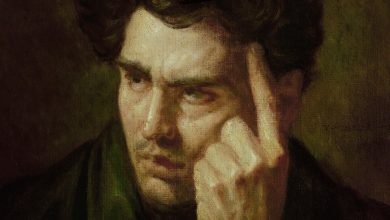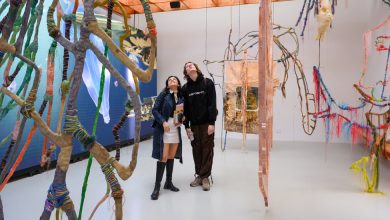The Meters’ Leo Nocentelli Gets a Solo Career, 50 Years Late

Leo Nocentelli decided to record a solo album just once, in the early 1970s. Though he was the guitarist and primary songwriter of the Meters — the epochal house band of New Orleans funk — he had a different palette in mind for his own LP: James Taylor and Elton John. He made “Another Side,” what he has referred to as his “country-and-western album,” and then it disappeared.
“I completely forgot about it,” Nocentelli, 75, said on a video call, wearing a newsboy cap and shades at his home in New Orleans, noting that he didn’t even have a copy of the record. “It was like a distant memory. I didn’t remember the songs.”
The quarter-inch master tapes of “Another Side,” out Friday in various formats after a 50-year delay, sat unreleased in storage for decades at Allen Toussaint’s Sea-Saint Recording Studio in New Orleans. When Hurricane Katrina hit in 2005, Sea-Saint — which housed numerous landmark recordings — was destroyed by floodwater, and its archives were reasonably presumed to have perished along with it.
But about a quarter of the tapes at the facility were spared. And eventually the surviving material made its way to Los Angeles, where Bill Valenziano, who bought Sea-Saint in 1995, had it put into storage. After some missed payments and an auction in 2018, 16 boxes of master tapes bearing the Sea-Saint name landed at a swap meet in Torrance, Calif. When they were brought out for sale, a collector and D.J. named Mike Nishita was called over to take a look, and his eyes widened at the sight of the names: the Meters, Dr. John, Irma Thomas.
“I didn’t really know about that studio at all,” Nishita, a soft-spoken individual known by some as “Hawaiian Mike,” said in a recent interview. (His brother is “Money Mark” Nishita, a keyboardist often referred to as the unofficial fourth member of the Beastie Boys.) “I just Googled ‘Sea-Saint,’ and was like, ‘Holy [expletive].’” He bought the lot for $100 a box, and got out of there before the seller could change his mind. Sifting through the music, he quickly found his favorite reel of the bunch: Nocentelli’s lost solo album, which no one else in the world seemed to know existed.
“I immediately wanted to shut it off — like, someone has to hear this besides me,” he said, remembering when he hit play for the first time. “It kind of wasn’t fair that I get to listen to it.”
Nishita was well aware of Nocentelli — as a member of the Meters, a group that made its name with infectious semi-instrumentals like “Cissy Strut” and “Look-Ka Py Py,” seven of which charted on the Billboard Hot 100 between 1969 and 1970. With Art Neville on keyboard, George Porter Jr. on bass, Zigaboo Modeliste on drums and Nocentelli on guitar, the Meters were just as busy behind the scenes, regularly playing as session musicians on a variety of Toussaint productions, such as Dr. John’s “Right Place, Wrong Time” and Labelle’s “Lady Marmalade.”
But according to Nocentelli, his path might very well have gone in a completely different direction. “The Meters kind of happened by accident,” he said, noting that, growing up in New Orleans, he was more interested in becoming a jazz guitarist in the vein of Wes Montgomery. That was before he found himself scooped into the world of R&B, playing on Lee Dorsey’s Top 10 hit “Ya Ya” when he was 15, and supporting Otis Redding on tour at 16.
Just as quickly as the Meters took off, though, there were problems that threatened their future. What the group has described as an unfavorable publishing and managerial arrangement with Toussaint and his business partner, Marshall Sehorn, limited the band’s royalties, and in 1971, the group’s label, Josie Records, went out of business. Around that point, the Meters went on a hiatus — and at home in the Seventh Ward, Nocentelli began noodling around with a nylon-string guitar.
He was inspired by the sounds and stories of James Taylor’s 1970 album, “Sweet Baby James,” and wanted to craft his own take on the style: Catchy songs like “Pretty Mittie,” about a farmer’s plans to move to the city, and “Riverfront,” a working-class anthem inspired by the real life of Aaron Neville, Art’s brother. There were also somber songs about love and loss — and about the question of what success really means in the entertainment industry. “Reaching high but not getting nowhere,” he sings on “Getting Nowhere,” his trademark propulsive riffing replaced with understated strumming. “I must have gotten on the wrong cloud.”
Initially, Nocentelli didn’t have any intention to record his solo music, which he didn’t tell anyone about. But being around the elegant and confident Toussaint ultimately changed his mind. “I really admired him,” Nocentelli said, clearly sentimental about their long, complicated friendship. “He was a huge influence on me with recording aspects of the business.”
Snagging any opening he could at Cosimo Matassa’s Jazz City, the pre-eminent New Orleans recording studio before Sea-Saint opened in 1973, Nocentelli began recording his album, tapping those around him to play supporting parts: Toussaint on piano, Porter on bass, Modeliste and the highly regarded jazz player James Black on drums. All said, Nocentelli laid down nine originals and a cover of the Elton John single “Your Song,” which had then just been released.
“We would be in the studio recording, not knowing what or who we were recording for,” Porter, 73, said on the phone from New Orleans of how swamped with sessions the band was during those years. “When Leo was reminding me that I’m playing on this record, I said, ‘Really?’”
The pieces had started to come together, but the album never went further than the rough recordings, which Nocentelli essentially viewed as demos at the time. The way he remembers it, his money was drying up, and the Meters were soon back together and busier than ever after signing to Warner Bros., leaving “Another Side” to pick up cobwebs. But Porter has a less charitable view of why he and his bandmates weren’t encouraged to branch out on their own and how a record like this could be left behind: “My gut feeling was that Marshall Sehorn did not at all want us to become so big that we weren’t under his thumb,” he said. “So him sitting on that project and making that disappear is not a surprise.”
Either way, the Meters carried on into their major-label period, subsequently embracing songs with more traditional singing parts. Yet Nocentelli almost never took lead vocals while in the band, despite having proven more than capable during his solo foray. “I was always the shy guy,” he said. If you look, it’s hard to even find pictures of Nocentelli by himself in the Meters’ original run.
As time has gone on, the main narratives of this era of New Orleans music have solidified, and some of the chapters have started to close; Sehorn died in 2006, Matassa in 2014, Toussaint in 2015 and Art Neville in 2019. (The Meters broke up in 1977; since the late ’80s, they have reunited off and on in various forms.) But when a new wrinkle in the timeline opened at that swap meet in Torrance, it offered a sideways glimpse at an alternate reality in which Nocentelli became a star in his own right.
“There’s a certain spirituality about this that I feel,” Nocentelli said. “Things like this are very rare. It wasn’t supposed to happen.”
In terms of finally giving “Another Side” the industry attention it previously missed, it was not difficult to find an interested party. Nishita is close friends with Mario Caldato Jr., a producer and engineer who’s worked with the Beastie Boys and knows Matt Sullivan, the founder of Light in the Attic Records. Sullivan was one of the first people invited to check out the collection, and soon set up the Nocentelli release. Right place, right time.
“Every time I listen to this record, it’s like, how was this never released?” Sullivan said, speaking from Austin, Texas. “This should have been on the radio in the ’70s.”
There are still approximately 3,000 more hours of Sea-Saint-related music sitting in Nishita’s garage, which he says includes an unreleased Meters album from their early days. The prospect of that particular one ever being released is far more precarious from a legal perspective than Nocentelli’s solo album, but if all principal parties can get on board, it could happen.
For now, Nocentelli is giving his new role a try, embracing a spotlight that had flickered near him for so long. He’s even beginning to accept the imperfections of “Another Side” that still stick out when he listens, 50 years later. “I was hearing much more than what was there,” he said, explaining that he planned for the album to have horns, as well as additional instrumentation. “But that doesn’t mean that what was there wasn’t sufficient. Evidently it was. And it is.”



